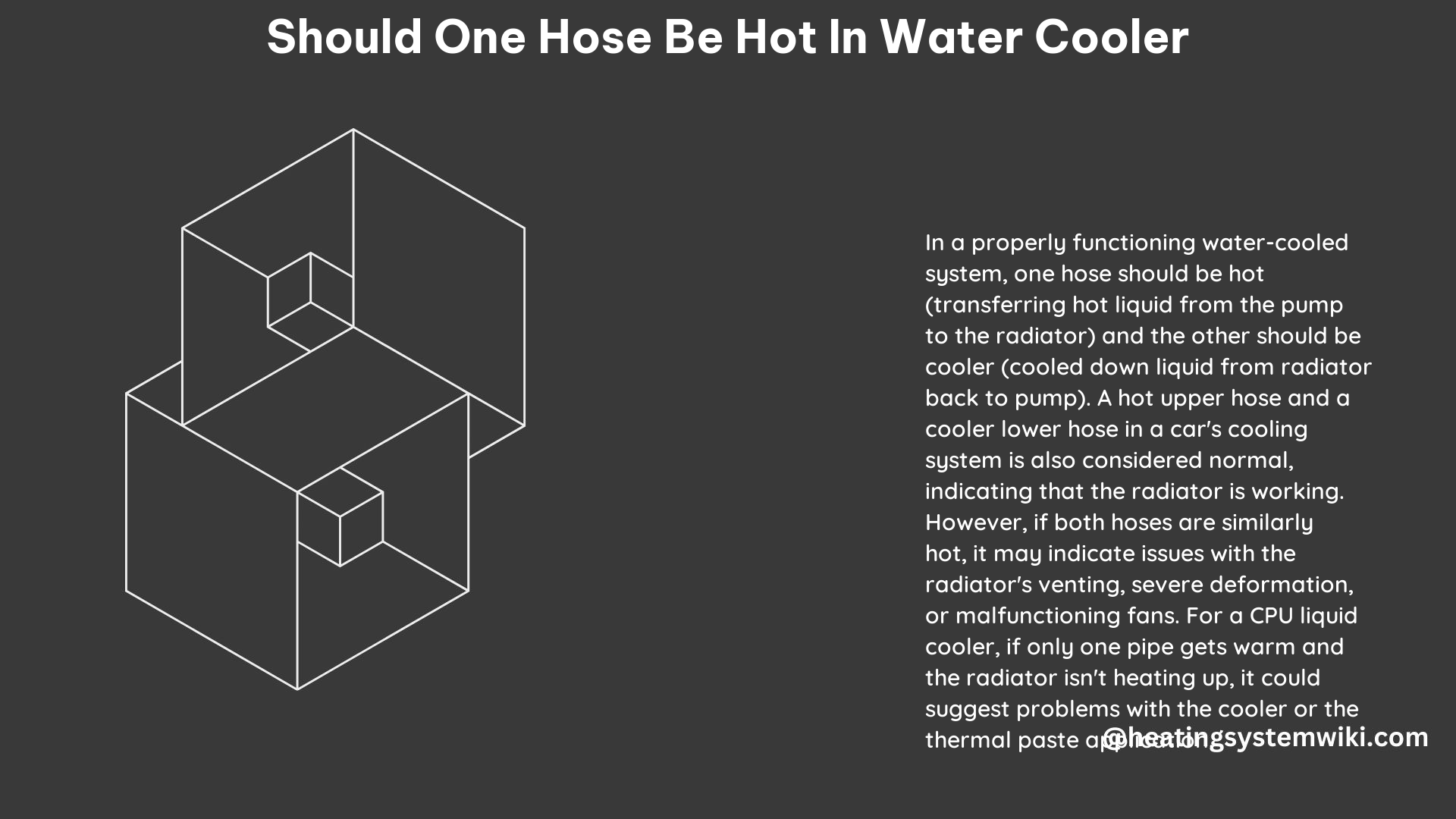The question of whether one hose should be hot in a water cooler system is a common concern among users. The answer to this question depends on the specific configuration and operation of the cooling system.
Understanding Water Cooler System Components
A water cooler system typically consists of the following components:
- Radiator: The radiator is responsible for dissipating the heat generated by the heat source, such as a CPU or GPU.
- Pump: The pump circulates the coolant through the system.
- Block: The block is in direct contact with the heat source and transfers the heat to the coolant.
- Tubes: The tubes carry the heated coolant from the block to the radiator and the cooled coolant back to the block.
- Coolant: The coolant is the liquid that circulates through the system, absorbing and dissipating heat.
Coolant Temperature Distribution

When the water cooler system is operating, the coolant is pumped through the block, where it absorbs heat from the heat source. The heated coolant is then circulated through the tubes to the radiator, where it is cooled down by the fans. The cooled coolant is then pumped back to the block, completing the cycle.
During this process, the temperature distribution along the tubes should be uneven, with one side being hotter than the other. This is because the hot coolant is being transferred from the block to the radiator, causing one side of the tube to be hotter than the other.
Potential Issues with Hot Tubes
In some cases, both tubes may be hot, which could indicate a problem with the cooling system. This can happen for a few reasons:
- Insufficient Coolant: If the system is not properly filled with coolant, the coolant may not be circulating properly, causing both tubes to be hot.
- Pump Failure: If the pump is not working properly, the coolant may not be circulating, leading to both tubes being hot.
- Radiator or Fan Issues: If the radiator is not properly vented or the fans are not functioning correctly, the coolant may not be cooled down effectively, causing both tubes to be hot.
Diagnosing the Issue
To determine whether the cooling system is operating properly, it is important to check the temperature of both tubes. If one tube is significantly hotter than the other, it is likely that the system is operating normally. However, if both tubes are similarly hot, it may indicate a problem with the cooling system.
In addition to checking the temperature of the tubes, it is also important to check the following:
- Radiator: Ensure that the radiator is properly vented to the outside and that the fans are working correctly.
- Coolant Level: Check the coolant level in the system and top it up if necessary.
- Pump: Ensure that the pump is functioning properly and circulating the coolant as expected.
Technical Specifications
Here are some technical specifications related to water cooler systems:
- Coolant Flow Rate: Typically, the coolant flow rate in a water cooler system ranges from 0.5 to 1.5 gallons per minute (GPM).
- Coolant Temperature: The coolant temperature can range from 40°C (104°F) to 60°C (140°F), depending on the load and ambient temperature.
- Radiator Size: The size of the radiator is typically determined by the heat load of the system and can range from 120mm to 360mm in length.
- Fan Speed: The fans in the radiator typically operate at speeds ranging from 800 to 2,000 RPM, depending on the cooling requirements.
DIY Tips
Here are some DIY tips for troubleshooting and maintaining a water cooler system:
- Check Tube Temperatures: Regularly check the temperature of both tubes to ensure that one is significantly hotter than the other.
- Inspect the Radiator and Fans: Ensure that the radiator is properly vented and that the fans are functioning correctly.
- Monitor Coolant Level: Regularly check the coolant level and top it up if necessary.
- Verify Pump Operation: Ensure that the pump is circulating the coolant as expected.
- Clean the System: Periodically clean the system to remove any debris or buildup that could impede the flow of coolant.
By following these tips and understanding the technical specifications of your water cooler system, you can ensure that it is operating at its best and prevent any potential issues.
